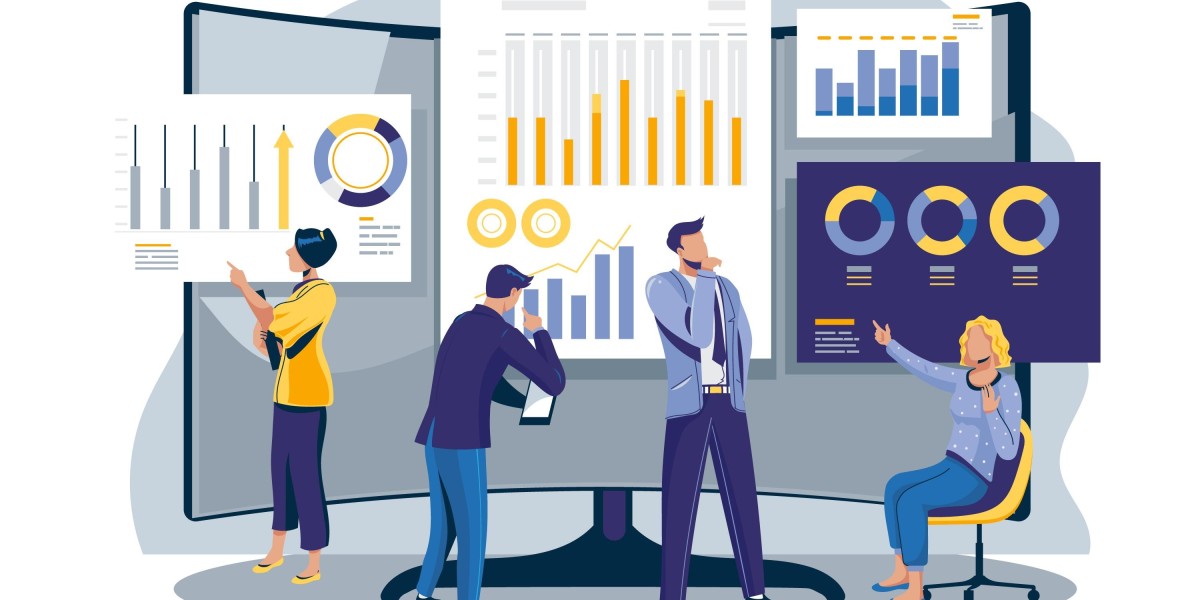In today's data-driven world, businesses are inundated with vast amounts of information. From customer preferences to market trends, data is the lifeline of modern organizations. However, collecting data is just the beginning. To truly harness the power of information, companies turn to Big Data Analytics. This innovative approach not only helps in making sense of the data but also enables organizations to gain valuable insights that drive decision-making and improve overall performance. In this article, we will explore how Big Data Analytics is revolutionizing the business landscape.
Understanding Big Data Analytics
Big Data Analytics is a multidisciplinary field that involves the examination of large and complex data sets to uncover hidden patterns, correlations, trends, and insights. It goes beyond traditional data analysis methods and requires advanced tools and techniques to process, store, and analyze data efficiently.
The Importance of Data Collection
Before diving into analytics, the first step is to collect relevant data. This data can be structured or unstructured and may come from various sources, such as social media, sensors, customer databases, or market research. The quality and quantity of data collected are crucial for the success of any analytics project.
Data Processing and Cleaning
Once the data is collected, it needs to be processed and cleaned to remove inconsistencies and errors. Data preprocessing is a critical step that ensures the accuracy and reliability of the analysis.
Types of Big Data
Big data can be categorized into three types: structured, semi-structured, and unstructured. Each type presents its unique challenges and opportunities for analysis.
Tools and Technologies
There is a wide range of tools and technologies available for Big Data Analytics, including Hadoop, Spark, Python, and R. These tools enable data scientists and analysts to manipulate and analyze data effectively.
Data Visualization
Data visualization is a key aspect of Big Data Analytics. It involves creating graphical representations of data to make it more understandable and actionable. Visualizations such as charts, graphs, and dashboards help in conveying complex information in a simple and comprehensible manner.
Predictive Analytics
Predictive analytics uses historical data to forecast future trends and outcomes. Businesses can use predictive models to make informed decisions and anticipate customer behaviors.
Real-Time Analytics
Real-time analytics allows organizations to analyze data as it is generated, providing immediate insights. This is particularly valuable in industries where timely decisions are critical, such as finance and healthcare.
Use Cases in Different Industries
Big Data Analytics has applications in various industries, including healthcare, finance, e-commerce, and manufacturing. It is used for fraud detection, personalized marketing, supply chain optimization, and more.
Benefits of Big Data Analytics
The benefits of Big Data Analytics are numerous. It helps in improving decision-making, enhancing operational efficiency, reducing costs, and gaining a competitive edge in the market.
Challenges and Concerns
While Big Data Analytics offers significant advantages, it also poses challenges related to data privacy, security, and the need for skilled professionals. Addressing these concerns is vital for successful implementation.
Future Trends
The field of Big Data Analytics is constantly evolving. Future trends include the integration of artificial intelligence, machine learning, and the growth of edge analytics.
Implementing Big Data Analytics
To implement Big Data Analytics successfully, organizations must have a clear strategy, a robust infrastructure, and a team of skilled data professionals.
Measuring Success
Measuring the success of Big Data Analytics initiatives involves setting key performance indicators (KPIs) and regularly evaluating their impact on business outcomes.
Conclusion
In conclusion, Big Data Analytics is transforming the way businesses operate and make decisions. By leveraging the power of data, organizations can gain valuable insights, improve their processes, and stay competitive in today's dynamic market. Embracing Big Data Analytics is not just a choice; it's a necessity in the data-driven era.
Key Takeaways
In today's rapidly evolving business landscape, data has become the most valuable resource for organizations. The ability to collect, process, and analyze data efficiently can mean the difference between success and failure. Big Data Analytics has emerged as the game-changer, enabling businesses to turn data into actionable insights.
One of the fundamental aspects of Big Data Analytics is understanding the data itself. Data can be categorized into structured, semi-structured, and unstructured forms. Each type requires a different approach to analysis. Structured data, such as numbers and categories, is the easiest to work with. Semi-structured data, like XML or JSON files, requires some preprocessing, while unstructured data, including text and multimedia, poses the greatest challenge.
To make sense of this data, organizations utilize various tools and technologies. Hadoop, for instance, is a popular open-source framework for distributed storage and processing of large datasets. Apache Spark, on the other hand, provides fast in-memory data processing. Python and R are widely used programming languages for data analysis, and their libraries offer a plethora of functions and capabilities.
Data visualization is another crucial component of Big Data Analytics. It allows stakeholders to comprehend complex data through graphical representations. With the help of charts, graphs, and interactive dashboards, decision-makers can quickly grasp trends and patterns, facilitating more informed choices.
Predictive analytics is where Big Data truly shines. By analyzing historical data, organizations can make accurate forecasts about future trends. This can have a significant impact on businesses. For instance, in the retail sector, predictive analytics can help optimize inventory management, ensuring products are available when customers need them.
Real-time analytics is vital for industries where timely decisions are paramount. Financial institutions, for instance, rely on real-time data analysis to detect fraudulent transactions instantly. In the healthcare sector, real-time analytics can monitor patient vitals and provide immediate alerts in case of anomalies.
The applications of Big Data Analytics span across various industries. In healthcare, it aids in personalized medicine by analyzing patient data to tailor treatment plans. Financial institutions employ it for risk assessment and fraud detection. E-commerce platforms use it to recommend products based on user behavior, increasing sales. Even in manufacturing, Big Data Analytics can optimize supply chains and predict equipment maintenance needs.
The benefits of adopting Big Data Analytics are substantial. Informed decision-making is at the core of its advantages. By having access to accurate insights, businesses can pivot strategies swiftly and adapt to changing market conditions. Operational efficiency is also enhanced as processes become more streamlined. Cost reduction is another significant benefit, as companies can identify areas where resources are not efficiently utilized.
However, the journey into Big Data Analytics is not without challenges. Data privacy and security are paramount concerns, especially with the increasing number of data breaches. Organizations must invest in robust security measures and adhere to data protection regulations. Moreover, there is a growing demand for skilled data professionals who can navigate the complexities of Big Data Analytics effectively.
Looking ahead, the future of Big Data Analytics is exciting. The integration of artificial intelligence and machine learning will take data analysis to new heights. Additionally, edge analytics, which involves processing data closer to its source, will become more prevalent, enabling faster decision-making in remote and distributed environments.
In conclusion, Big Data Analytics is no longer a choice but a necessity for businesses aiming to thrive in the data-driven era. As technology advances and data continues to proliferate, organizations must harness the power of data analytics to stay competitive and relevant in their respective industries. Big Data Analytics is the compass that guides businesses toward success in the dynamic world of data.








